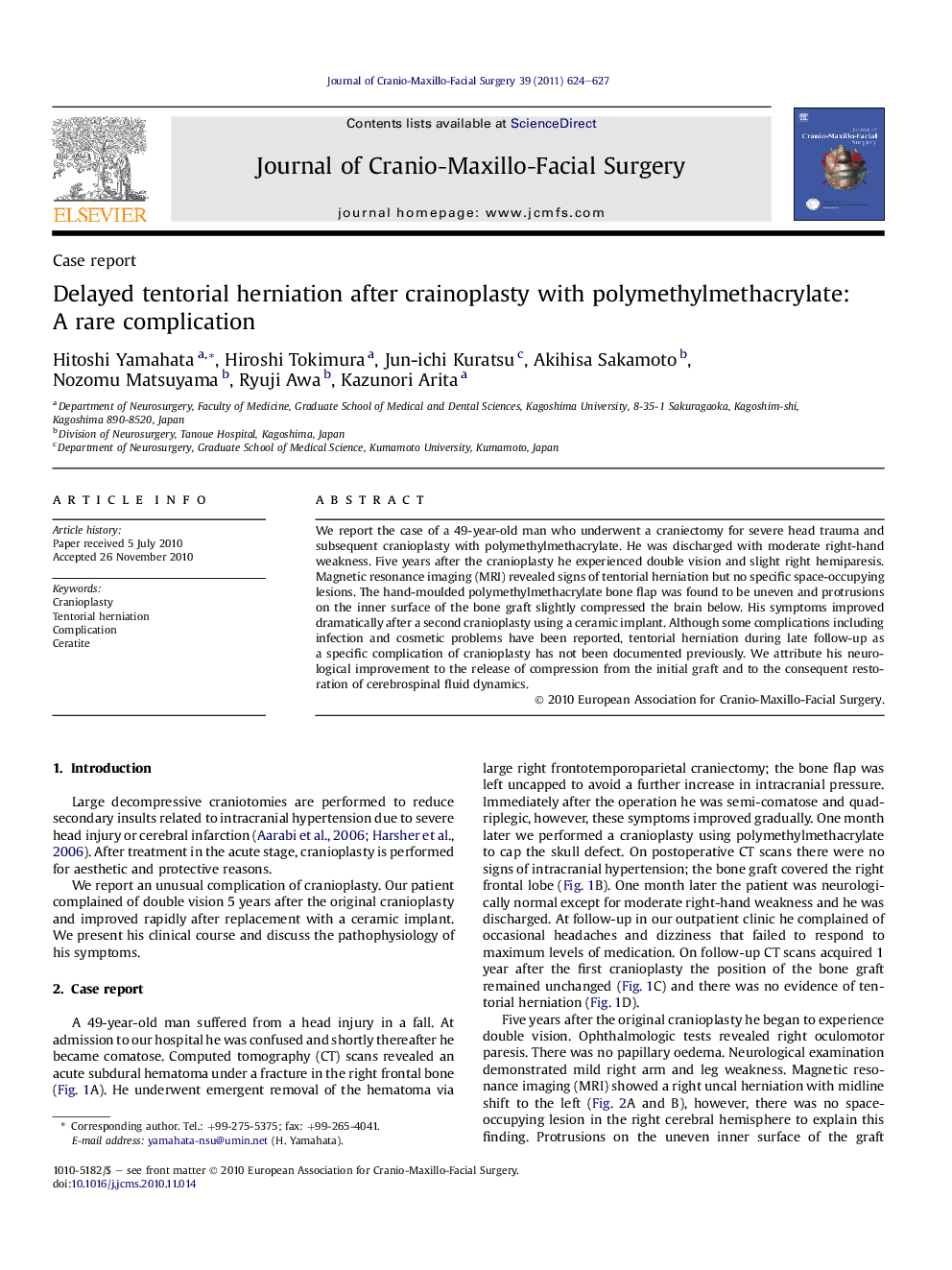| Article ID | Journal | Published Year | Pages | File Type |
|---|---|---|---|---|
| 3143590 | Journal of Cranio-Maxillofacial Surgery | 2011 | 4 Pages |
We report the case of a 49-year-old man who underwent a craniectomy for severe head trauma and subsequent cranioplasty with polymethylmethacrylate. He was discharged with moderate right-hand weakness. Five years after the cranioplasty he experienced double vision and slight right hemiparesis. Magnetic resonance imaging (MRI) revealed signs of tentorial herniation but no specific space-occupying lesions. The hand-moulded polymethylmethacrylate bone flap was found to be uneven and protrusions on the inner surface of the bone graft slightly compressed the brain below. His symptoms improved dramatically after a second cranioplasty using a ceramic implant. Although some complications including infection and cosmetic problems have been reported, tentorial herniation during late follow-up as a specific complication of cranioplasty has not been documented previously. We attribute his neurological improvement to the release of compression from the initial graft and to the consequent restoration of cerebrospinal fluid dynamics.
